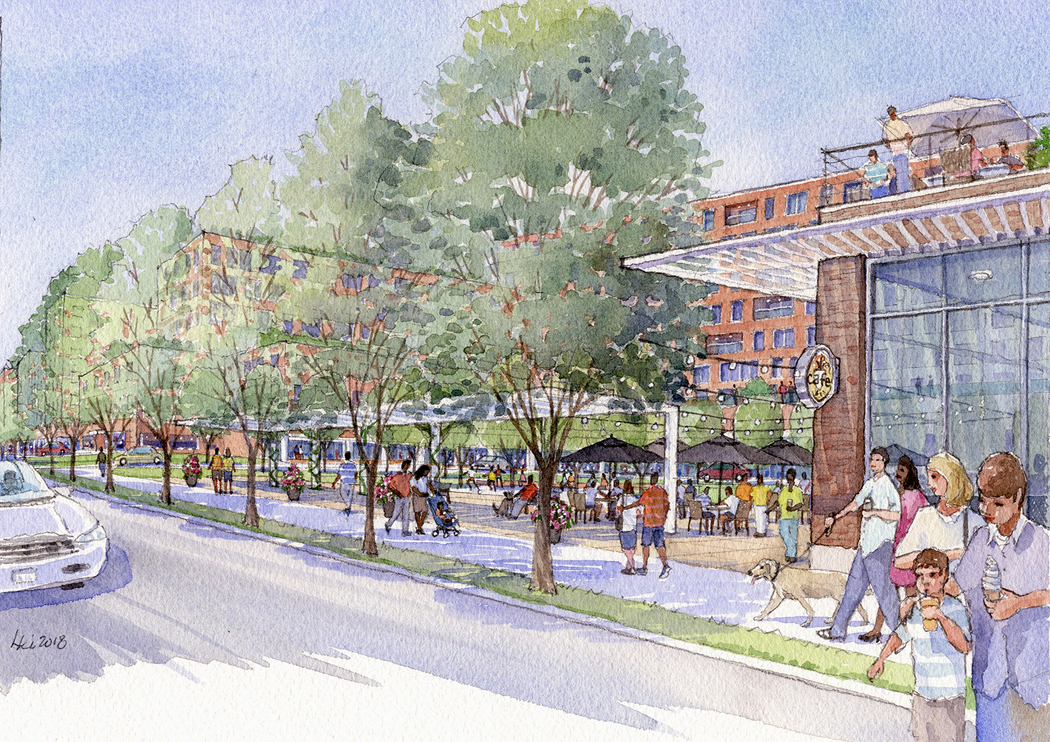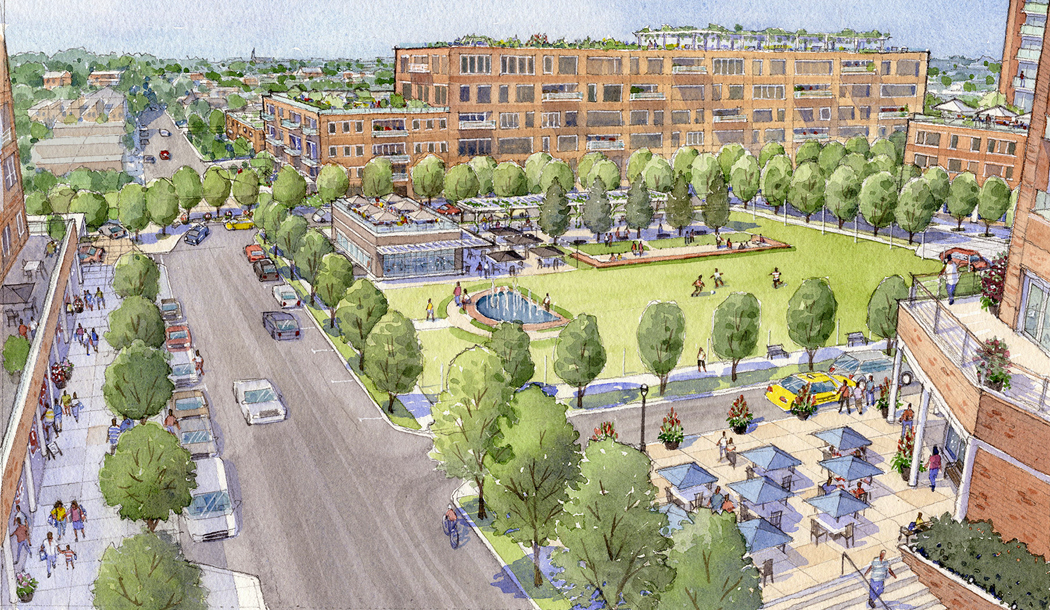
A 50-year-old dream for the St. Louis’ historic Lafayette Square neighborhood is about to come true.
The 12-acre North Development, where construction recently began, is the last phase of the revamping of the neighborhood, and includes the transformation of former industrial properties, some of them vacant for decades.
The new mixed-use residential, office and commercial center is the culmination of an 18-month collaboration between Chouteau Avenue Partners LLC, the Lafayette Square Restoration Committee, other neighbors, Alderwoman Christine Ingrassia, and the St. Louis Development Corporation.
The $160 million project, master planned by HOK architects, will include townhouses, apartments, offices, retail, entertainment and a hotel. HOK are also the designers of several buildings in the project.
The site presents many challenges, including outdated utilities, inadequate streets, significant legacy foundations of previous industrial buildings, and the large Mill Creek sewer that runs through the site. A Community Improvement District was created to help fund the extensive required infrastructure.
Phase I will include 14 townhouses and two apartment buildings, totaling 185 units, and the building or rebuilding of the infrastructure required for Phase 2, which includes utilities, streets, sidewalks, trees and lighting.
Phase II will include more than 250 additional apartments, a 200,000-square-foot office building, a signature restaurant, additional commercial space, two parking garages and a public park. An early 19th-century candle maker’s shop will be restored. It is the only structure from that period left on the site, and one of the oldest in the city.
The development will be a pedestrian-friendly environment integrated into the existing neighborhood, and will provide a wide variety of housing options for empty nesters, young singles, couples, families and workforce housing. Lafayette Park is one block south.
A Praxair gas cylinder facility occupied the central portion of the site now under development until 2005, when it was destroyed in an explosion and fire, and subsequently demolished. Other portions of the site have been vacant for many years. Vanguard Trucking, the last remaining commercial user on the site, relocated two years ago. Chouteau Avenue Partners LLC acquired the former Praxair parcel in 2017, consolidated control of the 12-acre site, and began planning the development.
“This project’s careful, cooperative and patience evolution will complete the transition from outmoded uses on a number of parcels, to a premier mixed-use anchor for Lafayette Square,” said Don Roe, director of planning for St. Louis. “It can be a demonstration of success for other St. Louis neighborhoods.”
In addition to completing the Lafayette Square neighborhood, the new development will also contribute to the changing nature of Chouteau Avenue, from industrial uses to those of meeting, neighborhood commercial and entertainment. The next Metrolink expansion is planned to go along Chouteau from 14th Street to Jefferson Avenue, where it will turn south.
Paul Hamilton of Hamilton Hospitality said, “Not only will this new development provide a location for us to expand our employee-owned hospitality group, it will also generate more revenue for all the surrounding businesses adjacent to the site, while also encouraging new startups or existing business to locate in St. Louis.”
The development will follow St. Louis Sustainable Design guidelines, as well as the LEED Green Building Rating System, and will be the largest LEED project in the city. Food roofs for urban farming are planned, much like Hamilton Farms, which already provides almost all of the fresh vegetables for its restaurants on site or in the new greenhouse.
Chouteau Avenue Partners and related development partners are working with SLDC and MOKAN to involve minority-, woman- and disadvantaged-owned businesses at all levels in the overall development.
The Lafayette Square North project will put long vacant or underused property back to productive use, bringing additional people and businesses back to the city and to the area, adding substantially to the tax base.

